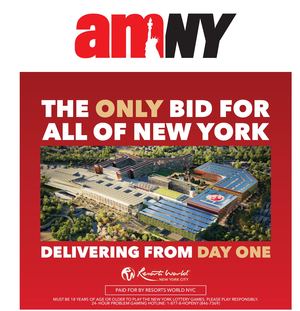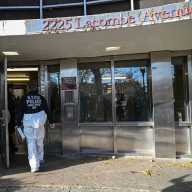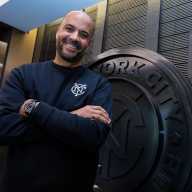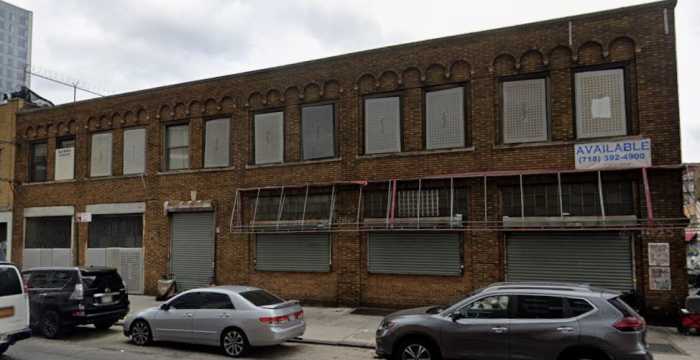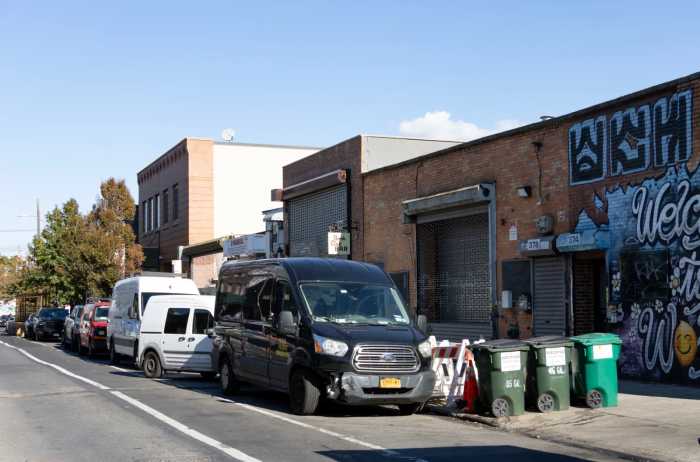Post-article traumatic shock
To The Editor:
We write to correct some factual inaccuracies in the Feb. 20 article “St. Vincent’s doesn’t buy community’s tunnel vision.” None of us were contacted to comment upon or verify the accuracy of what was reported in the article.
Andrew Berman did not present the Community Alternative Plan to St. Vincent’s officials at the Jan. 28 meeting referred to, nor were any representatives of Community Board 2 present at the meeting. In fact, the Community Alternative Plan, the work of more than a dozen different neighborhood groups, block associations and neighboring buildings, was shared with St. Vincent’s weeks earlier, and the Jan. 28 meeting was one in which St. Vincent’s invited those groups to meet with them to discuss the issues raised in the plan. At that meeting, neither Rudin nor St. Vincent’s gave any responses to any of the particulars of the plan, but promised attendees such responses would come soon.
A month later, in spite of repeated requests, we have still heard nothing from either Rudin or the hospital. We were, therefore, surprised to read in the Villager St. Vincent’s statement that one of about a dozen issues community groups have raised regarding the Rudin/St. Vincent’s plan — splitting the 330-foot-tall hospital into two more moderately sized buildings on either side of Seventh Ave. — is, in their minds, impossible. We have still heard no response to any of the other very serious issues we have raised, such as the size of the enormous planned Rudin apartment block, the inappropriateness of wholesale demolition of historic buildings in a landmark district and the impact of the proposed plan upon traffic, schools and other local infrastructure.
And the response regarding the impossibility of splitting the hospital into two buildings that could be connected by enclosed tunnels below street level — when hospitals all over New York connect separate buildings by belowground and aboveground passages — actually raises more questions than it provides answers.
The article also incorrectly implies that St. Vincent’s is being asked to transport patients through the same tunnel that medical waste and garbage would be transported through; nothing could be further from the truth, and such mischaracterizations have been brought to St. Vincent’s attention before.
We continue to extend ourselves to St. Vincent’s to try to work with them to find a way of meeting the hospital’s needs while respecting our neighborhood’s hard-fought landmark and zoning protections. However, the lack of responsiveness to the issues many in the community are raising, and the lack of direct communication by the hospital and its development partner Rudin, is preventing true progress from taking place.
Andrew Berman
Berman is executive director, Greenwich Village Society for Historic Preservation
Zack Winestine
Winestine is co-chairperson, Greenwich Village Community Task Force
Tom Molner
Molner is a member, W. 13th St. Neighborhood Association
Marguerite Martin
Martin is co-chairperson, W. 12th St. Block Association
Gary Tomei
Tomei is president, W. 13th St. 100 Block Association
David Marcus
Marcus is a board member, 175 W. 13th St.
Arline Rubin
Rubin is a board member, 175 W. 12th St.
Caroline Benveniste
Benveniste is a board member representing 125 W. 12th St.
Brenda Murad
Murad is a board member, 101 W. 12th St.
Delia Guazzo
Guazzo is a board member, 79 W. 12th St.
Scott Lauer
Lauer is a representative for the 137, 145 and 149 W. 12th St. Co-operative
Arlene Martin
Martin is board member, 49 W. 12th St.
Phil Schaffer and Irene Auerbach
Schaffer and Auerbach are W. 11th St. residents
Hospital ignores second opinions
To The Editor:
Re “St. Vincent’s doesn’t buy community’s tunnel vision” (news article, Feb. 20):
I was both disappointed and distressed to see your article on St. Vincent’s “draft response” to the Community Alternative Plan. It is disappointing that the hospital has chosen to publicize its position on the Community Alternative Plan in your pages, rather than respond to the broad coalition of community groups who proposed it. The Community Alternative Plan has been in St. Vincent’s hands since at least early January and hospital representatives met with various community representatives to discuss the plan on Jan. 28. The hospital has not responded to those representatives.
The failure of St. Vincent’s to respond directly, but rather to respond on the front page of The Villager, is indicative of the hospital’s complete lack of interest in any good-faith effort to address the community’s concerns. This is consistent with past practice — the hospital continues simply to reject any alternatives to its present plan and continues to press its plan as the only viable solution.
Protect the Village Historic District does not oppose the modernization of St. Vincent’s. We believe, however, that it is critical for any renovation to respect our historic neighborhood, New York City’s landmark preservation laws and the values of our community. We support alternatives that accomplish these goals. It is unfortunate that St. Vincent’s does not appear to share these goals.
Albert K. Butzel
Butzel is attorney for Protect the Village Historic District
Psycho PEP, qu’est ce que c’est?
To The Editor:
Re “Bird-brained PEP” (Scoopy’s Notebook, Feb. 20):
I was delighted to read that Park Enforcement Patrol Officer Martin Hightower has been arrested for mowing down birds with his cart in Battery Park. However, I was disgusted to also learn that he “may be fired” if these charges are true. May be fired? He should be jailed for killing these animals, if the charges stick.
I remember quite well Officer Hightower’s reign of terror in Washington Square Park two years ago. I was even quoted in that front-page Villager article (“PEP panic in Wash. Sq.; dog owners bare fangs,” April 19, 2006). The officer was a ticketing machine. He tried single-handedly to ruin people’s enjoyment of the park by ticketing dog walkers, bike riders and street performers, while drug dealers did business as usual. The fact that he followed a woman into the restroom because she wanted to wash out a dog’s drinking bowl is outrageous. He should have been fired then, rather than transferred.
If the allegations are true, I hope Hightower gets canned from his job and winds up behind bars. This guy is disturbed and should not be allowed to work in any park in New York City or anywhere else.
P.S.: I reside in South Florida now, but I enjoy reading The Villager online every week!
Cliff Tekel
Keeping the public trust
To The Editor:
Re “Gay youth back Pier 40 plan offering 24-hr. center” (news article, Feb. 20):
Hudson River Park Trust spokesperson Chris Martin was mistaken when he said, “Whether the [L.G.B.T.] drop-in center would be part of any one of the development plans will be up to the individual developer or developers” of Pier 40.
That decision, and any other decision regarding use of public park space, should ultimately be up to both the Hudson River Park Trust and the neighboring community served by such use.
Private developers don’t perform this function; that’s why we havegovernment — to be responsible to the people it is intended to serve.
Julie Nadel
Nadel is a board of directors member, Hudson River Park Trust, and chairperson, Community Board 1 Waterfront Committee
Telling Trust statement
To The Editor:
Re “Gay youth back Pier 40 plan offering 24-hr. center” (news article, Feb. 20):
Hidden deep in the recent Villager article about the possibility of a 24-hour center at Pier 40 for L.G.B.T. youth is a telling statement from the Hudson River Park Trust: “Whether the drop-in center would be part of any one of the development plans will be up to the individual developer or developers.”
This simple statement gives credence to the fears of the many people who opposed the passage of the Hudson River Park Act a decade ago because they felt it would create a slippery slope allowing developers and commercial interests to take control of the park, circumventing community input and deciding who the park welcomes and who it does not. Would decisions about whether small-boat access and sports camps are part of pier life also be left to the developer? Fortunately, the statement is also contrary to the words and intent of the act.
The Trust was created to build and manage a public park, not to lease public land to developers and give them full control over its uses. The act that created the Trust anticipates that the Trust will obtain operating income from limited commercial uses of specific parts of the park, including Pier 40. But with the purpose of preventing private interests from controlling vast areas of a park whose acreage is mostly water, leases were limited to a maximum of 30 years.
The Trust was not allowed to incur debt or expend funds to attract or support any business within the park. It remains the Trust’s obligation and purview to determine, in consultation with community boards and elected officials, the uses of the park, including its commercial nodes.
The 30-year maximum lease protects the park because financing major real estate development of the kind that would threaten public control of the park is generally impossible in that time frame. Achieving the goal of financing the operations of the park with revenues produced within the park but without effectively selling off public lands will always be a challenge: a challenge that will require creative solutions; a challenge that will require bringing our community together, not driving it apart; a challenge that offers the opportunity to take a narrow strip along the river and make of it a great and truly public park; in short, a challenge the Trust should embrace, not shirk.
A recent public relations campaign organized for the Trust by The Marino Organization seems directed toward an effort to get the state Legislature to allow longer leases in the park so that The Related Companies proposal that does not meet the requirements of the Pier 40 request for proposals can be shoehorned in. It is improper for the Trust to direct scarce public resources to an effort to get the act changed in a way that is contrary to the purposes the Trust was created to promote, contrary to the desires of the people of the city, whose enjoyment of river, fields and paths would be diminished, and contrary to the wishes of the legislators in the districts adjacent to the park.
During the debate prior to passage of the Hudson River Park Act, local youth sports groups, enticed by specific promises of public fields to be built at Pier 40 with public funds, played a significant role in achieving the public support needed to get the act passed. Some said we were selling out the interests of the community. But we believed that the great need in our neighborhoods for places for children to play sports justified an imperfect arrangement whereby the park would be supported by limited commercial uses. Now we are united with many of the people who opposed the park act to protect the very parts of the act that were included to assure the park would remain public open space forever.
Let’s welcome the L.G.B.T. youth group to the effort to keep the park a park, and let’s urge the Trust to open the pier doors to help them provide services our young people need.
Tobi Bergman
Bergman is chairperson, Community Board 2 Parks Committee, and president, Pier Park & Playground Association (P3), and a former president, Greenwich Village Little League
Fix up park for our kids
To The Editor:
Although I consider myself a longtime resident of the West Village, having lived here for 17 years, I’m sure there are many who would argue that I’m but a plebe. I’d just like to be put down as one resident who can’t wait for a renovated Washington Square Park.
My hope is that there will be better playing areas for my 4-year-old daughter, who I think has as much right if not more to have a local park that fits her needs, much more so than performers who show up to entertain the tourists on weekends.
Let’s face it: The Village has not only changed since I moved here in 1991 but certainly since 1960 or when the park was originally designed. Seen any cars drive thought the park lately?
When I moved to the Village, the sighting of a small child was as rare as a hen’s tooth. Now the Village is overrun with kids that need a better place to play. I hope the new Washington Square Park becomes that place.
Don’t tell me how great the park was, because frankly I think it hadturned into a real armpit.
Michael Casteele
Different Rx prescription
To The Editor:
Re “Saying no to CoerciveCare and all its side effects” (talking point, by Shikha Dalmia, Feb. 13):
Shikha Dalmia is certainly right about the gross failure of Romney’s “individual mandates” in Massachusetts to control costs or cover all the uninsured. However, she’s completely off the wall on the solution.
She claims health insurance would be more affordable if only Obama “would embrace market-oriented measures,” such as more deregulation or “giving patients more control over their healthcare dollars” (code for “health savings accounts”), etc. Evidently, Ms. Dalmia has failed to notice that Obama’s plan does embrace the market-based industry, just like Hillary’s, except no mandates.
“Market-oriented measures,” i.e., for-profit insurance companies running the show, have brought us the mess we’re in today: a miserable mishmash where large corporations reap obscene profits by raising premiums, limiting and denying care and restricting freedom of individuals to choose their doctors.
As long as insurance is provided by the for-profit industry, more than 30 percent of our healthcare dollars will go for administrative waste, advertising, huge C.E.O. salaries and bonuses, in addition to shareholder profits, which is, of course, the primary obligation of a for-profit company — not healthcare.
The only real solution is a single-payer system, such as in John Conyer’s H.R. 676 (“Expanded and Improved Medicare for All”), a concept which exists in pretty much every other developed country in the world, at lower cost, greater efficiency, with better health outcomes and citizen satisfaction than the so-called glorious free market “system” we’ve got. Overhead for Medicare is 2 percent to 3 percent, in contrast to, as mentioned, for the market-based dream “solution” — more than 30 percent. That’s a savings of more than $350 billion right there! By the way, despite the decades of brainwash, “Medicare for All,” as in Conyer’s bill, is not “socialized medicine.” Like Medicare, it is government funded, privately delivered. Patients are free to go to any private provider they wish and care is guaranteed for life for all essential medical services.
Mr. Obama knows better. When he was in the Illinois Senate and when he first came to the U.S. Senate, he was strongly for single-payer. (Type in “Obama and single-payer” on YouTube.) But funny things happen when you’re running for president. Perhaps his handlers told him he shouldn’t upset the healthcare industry that has given him enormous campaign contributions, second only to Hillary.
The real debate on healthcare reform should be free-market, for-profit insurance versus nonprofit, single-payer. Unfortunately, we’re not having this debate because neither Clinton nor Obama have the audacity to hope and fight for real change in healthcare. This isn’t to say I wouldn’t vote for either one of them. At least the Democrats recognize the desperate need for affordable healthcare for all; Republicans remain hopelessly stuck in “trickle down.” I have the audacity to hope that if We, the People, overwhelmingly demand it, either Clinton or Obama will find the courage to support single-payer.Consuelo Reyes
Change needed in Albany
To The Editor:
Re: “Former Schumer aide challenges Connor in Senate” (news article, Jan. 23):
The comment by state Senator Martin Connor’s campaign that the only major change we need in Albany is Democratic control of the state Senate demonstrates just how out of touch Senator Connor is — and exactly why it matters which Democrats we have representing us.
In Albany, the Democratic and Republican parties have been full partners in the failures of our state government. Both view the important issues facing New York as opportunities to score points over one another, rather than to get things done. And, as we have seen in Washington, just because a party takes over does not assure meaningful change.
Will a Democratic-controlled state Senate actually push to repeal the Urstadt Law and give New York City control over its housing policy? Will there finally be a vote to legalize gay marriage? And what about bringing back the commuter tax, which Senator Connor voted to repeal and in so doing cost New York City hundreds of millions of dollars which now, as the city faces a multibillion-dollar deficit, we could really use?
Apparently Senator Connor would rather engage in negative campaigning than defend his record and address the issues. He is the embodiment of politics as usual in Albany, not a departure from the broken status quo.
Jonna McLaughlin
Hurry up landmarking
To The Editor:
I find it very distressing that the Lower East Side Historic District proposal approved by Community Board 3 a long time ago has still not been calendared by the Landmarks Preservation Commission. Can someone please tell us what is delaying this? Is anyone working to push this along?
Meanwhile, older buildings are being demolished at a rapid rate and replaced by ugly, out-of-scale condominiums. Soon there will be few interesting structures left on the Lower East Side. Where is the sense of urgency?
Rima Finzi-Strauss
E-mail letters, not longer than 250 words in length, to news@thevillager.com or fax to 212-229-2790 or mail to The Villager, Letters to the Editor, 145 Sixth Ave., ground floor, NY, NY 10013. Please include phone number for confirmation purposes. The Villager reserves the right to edit letters for space, grammar, clarity and libel.
